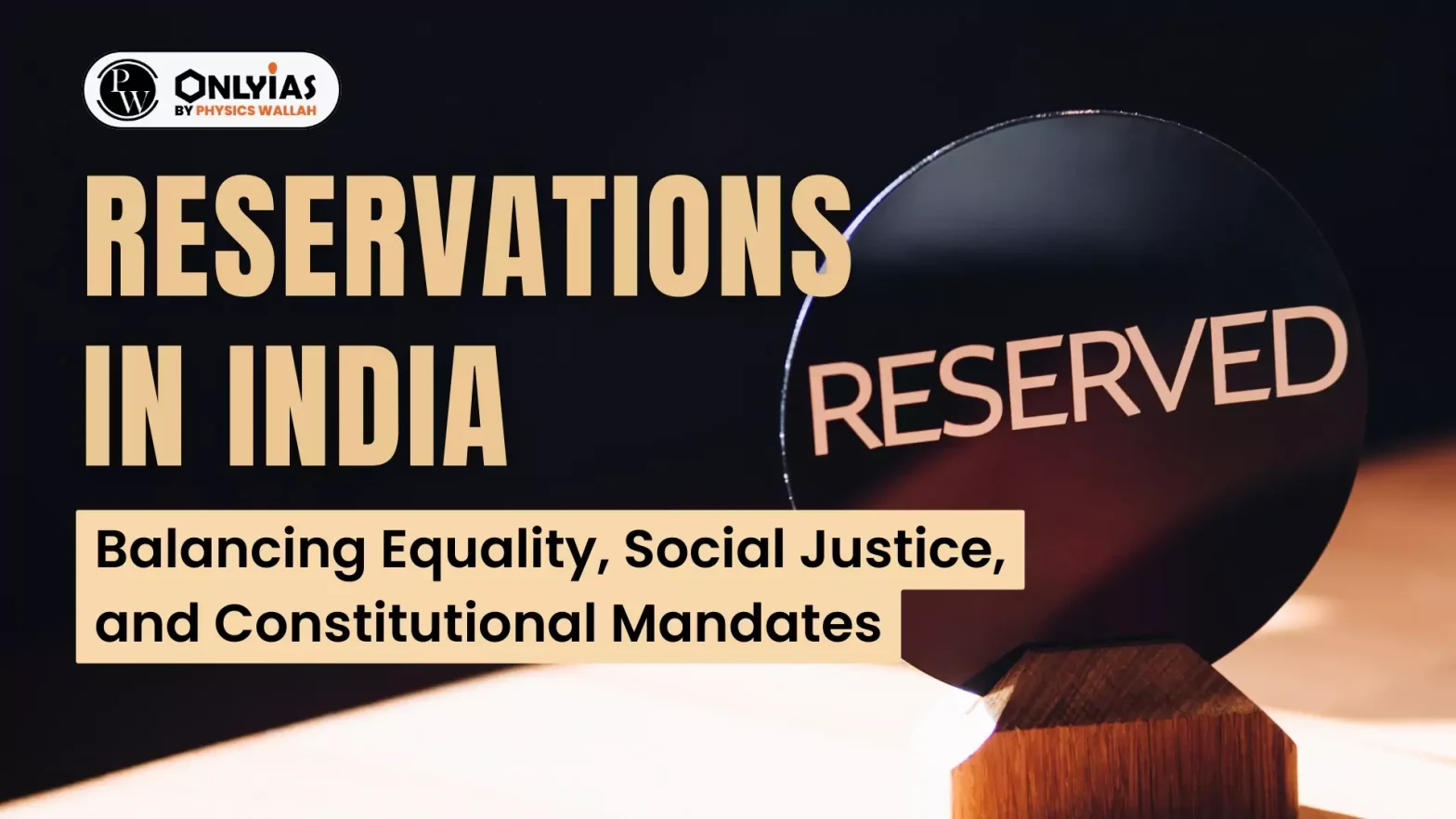Context
A political contest has emerged over the reservation issues with one political party making strange remarks about the other party’s demand for caste census by linking it to religion.
Constitutional Basis for Reservations in India
- Equality & Social Justice: The Indian Constitution aims to balance the principles of equality and social justice.
- Articles 15 and 16: It guarantees equality to all citizens in state actions (like admissions to educational institutions) and public employment.
- However, these articles also allow the state to make special provisions for the advancement of socially and educationally backward classes (Other Backward Class (OBC), Scheduled Castes (SCs), and Scheduled Tribes (STs).
- Categorization of Backward Classes: OBC is a broad term encompassing various castes deemed socially and educationally backward. Many states also have a separate category for Most Backward Classes (MBCs).
Landmark Cases Reservations in India
- Indra Sawhney Case (1992):
- Upheld 27% OBC reservation.
- Introduced the 50% cap on total reservations.
- Creamy layer concept for OBCs.
- Janhit Abhiyan Case (2022): Upheld 10% EWS (Economically Weaker Sections) reservation.
Enroll now for UPSC Online Course
| Country |
Case Study |
| United States of America |
- Affirmative Actions: In the US, affirmative action programs aim to give some extra help to racial minorities who have faced discrimination.
- It’s like giving a boost to someone who’s had a harder time in life because of their race.
- Example: In the past, some universities would give a little extra consideration to Black or Hispanic students when deciding who to admit.
- Admissions Ruling: However, just recently, the Supreme Court (the highest court in the US) decided that colleges can’t use race as a factor in admissions anymore. They said it goes against the idea that everyone should be treated equally no matter their race.
|
| United Kingdom |
- Positive Action in Employment: Positive action in the UK allows employers to take proportionate steps to help disadvantaged groups. This is voluntary, not mandatory.
- Encouraging Diversity: Actions are designed to encourage people from underrepresented groups to overcome barriers.
- Examples include targeted training programs or mentoring initiatives.
- It aims to address historical disadvantages and improve diversity within the workplace.
- Positive Action vs. Positive Discrimination: Positive action should not be confused with positive discrimination, which is unlawful.
|
| France |
- Race-Neutral Equality Approach: France focuses on socioeconomic disadvantage rather than race or ethnicity in its equality programs.
- This approach avoids the concept of affirmative action based on racial or ethnic categories.
- Targeted Support: Priority Education Zones (ZEPs) target schools in disadvantaged areas,providing additional resources.
- These resources might include smaller classes, extra tutoring, or other support.
- Goal of the Policy: The goal is to ensure every student has a fair chance to succeed, regardless of their family’s income.
|
Current Issues and Debates on Reservations in India
- Sub-categorization within OBCs: Aims to ensure equitable distribution of benefits among various Backward Class sub-groups (Rohini Commission).
- Creamy layer for SC/ST: A contentious issue, whether to exclude better-off sections within SC/ST from reservations.
- Reservation for Religious Minorities: Debate over reservations based solely on religion vs. reservations granted to socially/educationally backward groups within various religions.
- Extending SC Reservation: Commission headed by Justice K.G. Balakrishnan looked into reservations for Dalits who converted to religions other than Buddhism and Sikhism.
- Increasing the 50% Cap: Political demand to remove the cap on reservation, potential legal and social ramifications.
Conclusion
The aim should be towards the continuous pursuit of social justice while maintaining a harmonious balance with equality guaranteed in the Constitution.
Also Read: Religion Based Reservation: Muslim Quota Row
![]() 10 May 2024
10 May 2024

